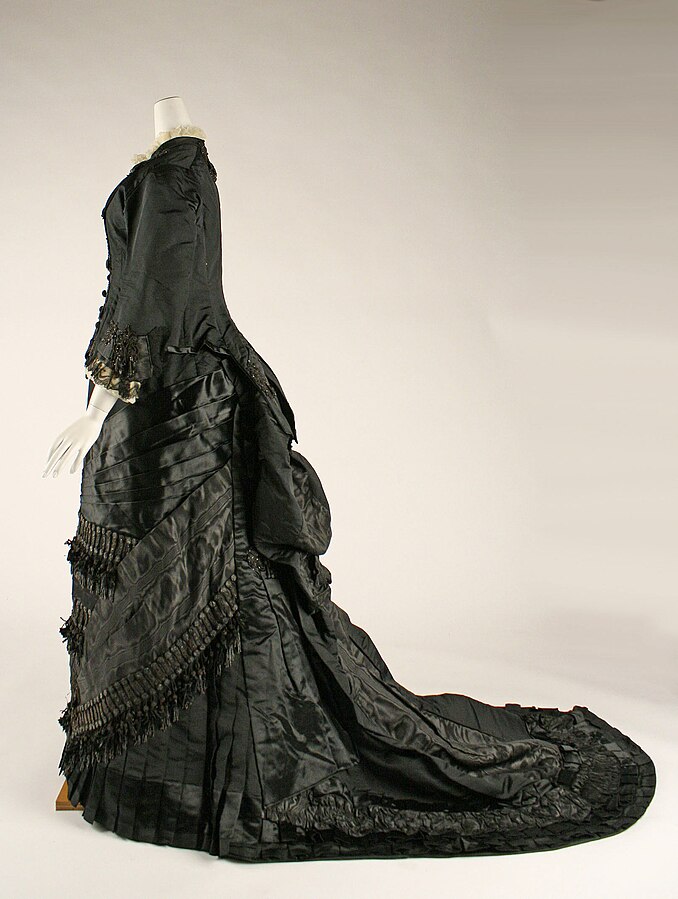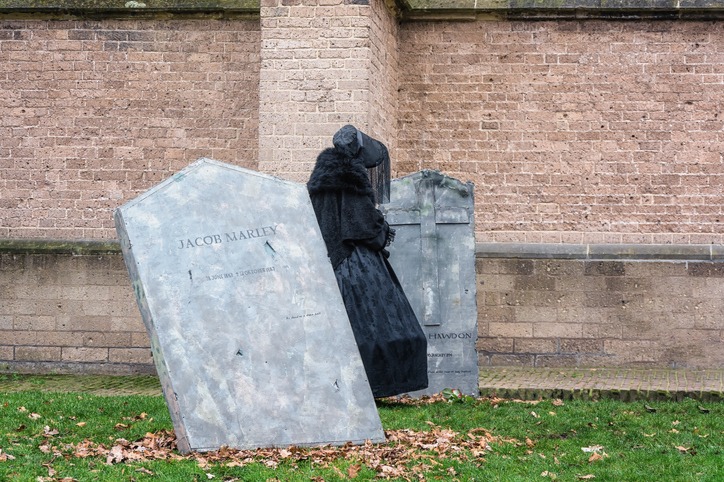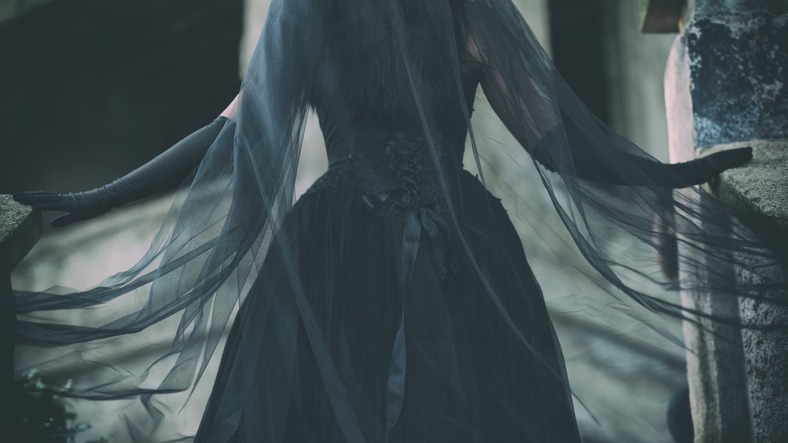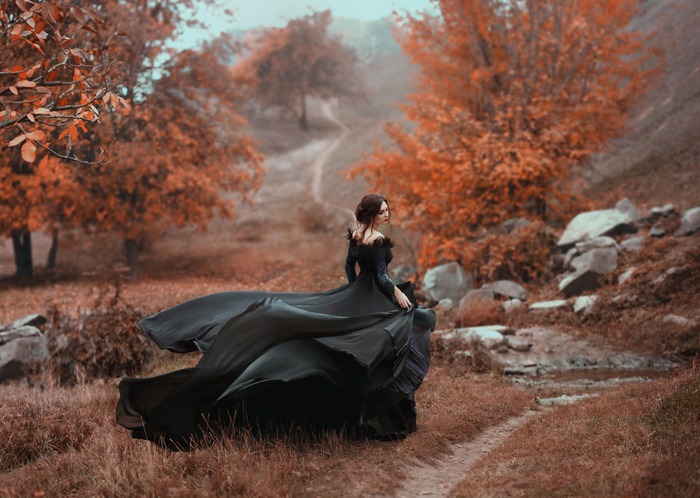The Victorian era, spanning from 1837 to 1901, was a time of stringent social rules and customs, particularly evident in the way people dressed for mourning. This period saw mourning dress not just as a personal expression of grief but as a deeply embedded societal norm guided by strict etiquette. Understanding the intricacies of Victorian mourning attire offers a fascinating glimpse into how fashion served as a public display of private sorrow.
During this time, the mourning dress was more than just clothing. It also served as a way to express loss. The rules governing what to wear, the colors, the materials, and even the duration of mourning reflected a society that ritualized grief. This article discusses what the Victorian mourning dress reveals about the fashion of grief, exploring its symbolic meanings, societal implications, and its lasting influence on how we perceive fashion in the context of mourning today.
Historical Context of Mourning Dress
The practice of wearing special attire for mourning has deep historical roots, but it was during the Victorian era that it reached its peak in terms of strict rules and elaborate customs. Initially, the mourning dress was a simple expression of grief, but as the 19th century progressed, it evolved into a highly codified system. Influenced by Queen Victoria’s prolonged mourning after the death of Prince Albert, the public began to adopt increasingly elaborate and specific mourning practices, making it a significant part of Victorian culture.
The Strict Etiquette of Victorian Mourning Attire
Victorian mourning etiquette was intricate and varied depending on factors such as the mourner’s relation to the deceased, their social status, and the mourning period. The initial phase, known as deep mourning or full mourning, required all-black attire, often made of non-reflective fabrics like crepe.
As time passed, mourners transitioned into half-mourning, where they could incorporate colors like grey and purple. This strict dress code served as an outward symbol of respect and sorrow, and non-adherence was often frowned upon.
The Influence of Social Class and Gender
Social class played a significant role in mourning practices. For the wealthy, mourning attire was an opportunity to display their affluence through high-quality fabrics and intricate designs. In contrast, the working class often struggled to afford appropriate mourning wear, leading to societal pressure and financial strain.
Gender also influenced mourning attire, with women expected to adhere to more rigorous standards than men. Women’s mourning attire included not only dresses but also accessories like veils and hats, which were symbolic of their role as the bearers of familial grief.
Through understanding the historical context of mourning dress in the Victorian era, one can gain insight into a society that viewed mourning not just as a personal process but as a public statement, deeply intertwined with social and cultural norms of the time.
Symbolism in Mourning Attire
In the Victorian era, every aspect of mourning attire carried a deeper meaning, serving as a visual language of grief and respect. The symbolism in these garments and accessories was rich and varied, reflecting the societal values and norms of the period.
Colors and Their Meanings
- Black: The most recognizable color of Victorian mourning attire, black represented solemnity and loss. It was worn during the initial period of deep mourning.
- Purple and Grey: Used in half-mourning phases, these colors signified the gradual return to normal life.
- White: Often worn by young widows and children, white symbolized purity and innocence in grief.
Materials and Accessories
- Crepe Fabric: A dull, matte fabric, crepe was favored for its lack of shine, reflecting the somber mood of mourning.
- Jet Jewelry: Made from a type of lignite, jet jewelry was popular for its dark, reflective quality and was considered appropriate for mourning.
- Veils and Hats: Women’s veils, especially those made of crepe, were symbolic of privacy and protection in a time of vulnerability.
Mourning Attire for Different Relations
- Widows: Wore the most elaborate mourning attire, including full-length veils and specific dress styles, to reflect their closest relation to the deceased.
- Children and Unmarried Women: Had simpler mourning attire, often incorporating white or softer materials.
- Men: Typically wore a black suit with specific accessories like armbands or hats, symbolizing mourning in a more subdued manner.
The symbolism in Victorian mourning attire reveals how fashion was intricately linked to expressions of grief and societal expectations. These elements worked together to create a visual representation of mourning, illustrating the depth and complexity of loss during the Victorian era.
Social and Cultural Implications
The practice of wearing mourning dress in the Victorian era was not merely a fashion statement; it held profound social and cultural implications. This aspect of Victorian life illuminates the era’s attitudes towards death, grief, and societal expectations.
Mourning Dress as a Reflection of Social Status and Wealth
The elaborate nature of mourning dress was often a display of social status. Wealthy individuals could afford high-quality, specially made mourning attire, showcasing their status even in times of grief. This practice also created a divide between classes, as the less affluent struggled to conform to these expensive customs, often leading to social pressure and financial hardship.
The Role of Mourning Attire in Social and Gender Norms
Mourning attire was a way to maintain social order. Adhering to these norms was seen as a sign of moral character and respectability. Women bore the brunt of these expectations, as their mourning attire was more elaborate and their period of mourning longer compared to men. This reflected the societal view of women as the primary mourners responsible for upholding family honor in times of grief.
Criticisms and Challenges of Mourning Customs
As the era progressed, the rigid rules of mourning attire began to face criticism. Some viewed these customs as overly oppressive and superficial, detracting from the genuine expression of grief. Reformers and progressive thinkers of the time argued against the excessive financial and emotional burden these customs placed on individuals, especially women
Through its social and cultural implications, Victorian mourning dress serves as a window into the complex interplay between fashion, societal norms, and personal expression in the 19th century. The customs surrounding mourning attire reveal much about the values, pressures, and changes in Victorian society, offering valuable insights into the historical relationship between dress and social identity.
Mourning Dress and Artistic Expression
The Victorian era’s mourning dress not only reflected societal norms but also became a significant medium of artistic expression. This section explores how mourning attire influenced and was represented in various art forms, as well as its impact on contemporary fashion.
Mourning Dress in Literature and Art
Victorian literature often used mourning attire to symbolize themes of loss, grief, and societal constraints. Authors like Charles Dickens and Thomas Hardy depicted characters in mourning to convey emotional depth and societal commentary.
In visual arts, the mourning dress was portrayed with great detail, capturing the somber beauty and the intricate designs of the attire. These representations helped to convey the emotional weight of mourning and the societal importance placed on these customs.
Influence on Contemporary Fashion Designers and Trends
Modern fashion designers have drawn inspiration from the Victorian mourning dress, incorporating elements like lace, corsets, and somber color palettes into their collections. The aesthetic of mourning attire has influenced various fashion subcultures, such as Gothic fashion, where the symbolism and style of Victorian mourning wear are echoed in modern designs.
Mourning Dress in Modern Media Entertainment
In film and theater, Victorian mourning attire is often used to create an authentic historical ambiance and deepen character development. The dramatic and distinctive look of Victorian mourning dress has made it a popular choice in period dramas and historical documentaries, helping to visually narrate stories from this era.
Through its artistic expressions, Victorian mourning dress transcends its original purpose, influencing a wide range of creative fields. It serves as a testament to the enduring impact of historical fashion on contemporary culture and art, reflecting the ongoing fascination with the Victorian approach to dress and mourning.
Then and Now
Let us also explore the contrasts and parallels between Victorian mourning customs and contemporary practices and highlight how attitudes towards grief and mourning have evolved over time.
Comparing Victorian Mourning Customs with Modern-Day Practices
- Rigidity vs. Flexibility: Victorian mourning was characterized by strict rules and prolonged periods of mourning. In contrast, contemporary mourning practices are more flexible, with no standardized dress code or duration.
- Public Display vs. Private Grief: In Victorian times, public display of grief through attire was paramount. Today, mourning is often a more private affair, with less emphasis on outward expressions.
How Contemporary Fashion Interprets Grief and Mourning
- Subtler Expressions: Modern fashion rarely dictates specific mourning attire, but subtle nods, such as wearing a deceased loved one’s favorite color or a symbolic piece of jewelry, are common.
- Memorial Fashion: The concept of incorporating mementos or ashes into wearable items is a contemporary approach to keeping memories close, a contrast to the Victorian practice of wearing mourning jewelry like lockets or jet pieces.
Lessons Learned from the Victorian Approach to Grief and Mourning in Fashion
- The Evolution of Societal Attitudes: The shift from Victorian to modern practices reflects broader changes in society’s approach to death and mourning, with an increased focus on individual choice and emotional well-being.
- Cultural Sensitivity: Understanding the Victorian approach to mourning dress helps in appreciating the diverse ways different cultures express grief and the importance of respecting these practices.
The comparison between then and now offers valuable insights into how cultural, social, and individual perspectives on death and mourning have evolved and how these changes are reflected in our approach to fashion in times of grief. Different places have different traditional dresses embedded with culture and tradition. If you are interested to learn more about them, you may read our post, How Did the Xhubleta Shape Albanian Traditional Fashion?
Conclusion
Examining the Victorian mourning dress provides a unique lens through which we can understand not only the fashion of a bygone era but also the cultural attitudes towards grief and mourning. From the strict etiquette of the 19th century to the more personalized expressions of today, the evolution of mourning attire reflects broader societal changes.
This exploration reveals the deep connection between fashion and social customs, illustrating how clothing can be more than just a style choice but a reflection of personal and collective experiences. As we continue to evolve in our expressions of grief, the lessons from the Victorian era remain relevant, reminding us of the enduring impact of historical practices on modern life.




